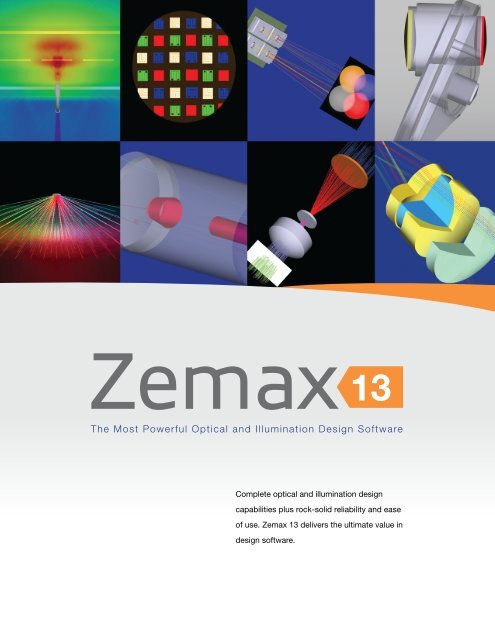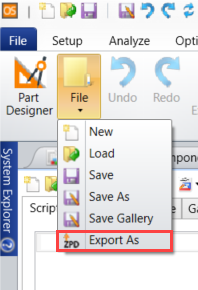
A square lightguide would be much better, but the logo doesn't allow an easy way to do this. Now, normally I wouldn't do a cylinder shaped lightguide since it can give you hotspots through focusing. After importing, the field can be set into a stored light source, and further operations of the field can be applied, e.g. VirtualLab Fusion can import the beam file, and convert it into field with all vectorial components. I used the Eclipse logo and made an extrusion in a CAD-program, this is what it looks like. Zemax beam file contains the irradiance and the phase information of the field.
#Zemax file imports registration
Go to the download page to obtain your copy of OpTaliX-LT (30 days free, after this period registration is required). To set this up I will use a simple lightguide illuminated by LEDs and a scattering surface at the top. Imported files can be viewed, analyzed and modified in all versions of OpTaliX, including OpTaliX-LT. Is there a method to import this lens system into my non-sequential setup for anlysis Other than inputting every surface manually. 3) is what I will go through here and is in my opinion the best way to do it. Hello Zemax community, I built a anlysis setup in non-sequential mode and designed a lens sytsem in sequential mode. 2) is ok, but also hard to overview and only works for square apertures. I find 1) tedious since you need to do focusing, which is especially hard when the aperture is large.
#Zemax file imports windows
There is no browse file in codev so you will need to locate through windows the renamed file. Go into CodeV and go to the Macro editor 7. 1) Make an eye model, with a lens as aperture and a detector at the image position, 2) Use filter commands (e.g x_lgt(n,v), see "filter string") to study light in a specific angle space and 3) use a detector at the emitting surface and filter it for rays going to the aperture plane. Rename the zemax file ( for clarity )to Codevzemaxxx.zmx 6. I know of three ways to do this in Zemax. To get perceived luminance maps of a surface, you need to consider where the light is going, using some type of aperture or measuring port (I will use the term aperture in this short article) to collect light. Even if the illuminance is uniform on a surface, it may still not look uniform from all viewing angles (or any angle for that matter).

It’s measured in candela/m2, or nits. Don't confuse it with illuminance which is the amount of luminous flux per unit area on a surface and measures in lumen/m2. Luminance is defined as “the intensity of light emitted from a surface per unit area in a given direction” (thanks Wikipedia). In this post I will show my way of doing just that, and give some light guide design tips on the way. MATLAB Data Import and Analysis Data Import and Export Standard File Formats Other Formats. However, there are ways to go around that, as often the case. There are few external packages that are available on MATLAB file exchange which reads zemax file. In Zemax you get easily get the luminance for an entire surface, but not the local luminance or luminace maps.

Luminance is arguably the most important component to analyze when evaluating a lighting design since it answer the fundamental question, "What will it look like?".


 0 kommentar(er)
0 kommentar(er)
